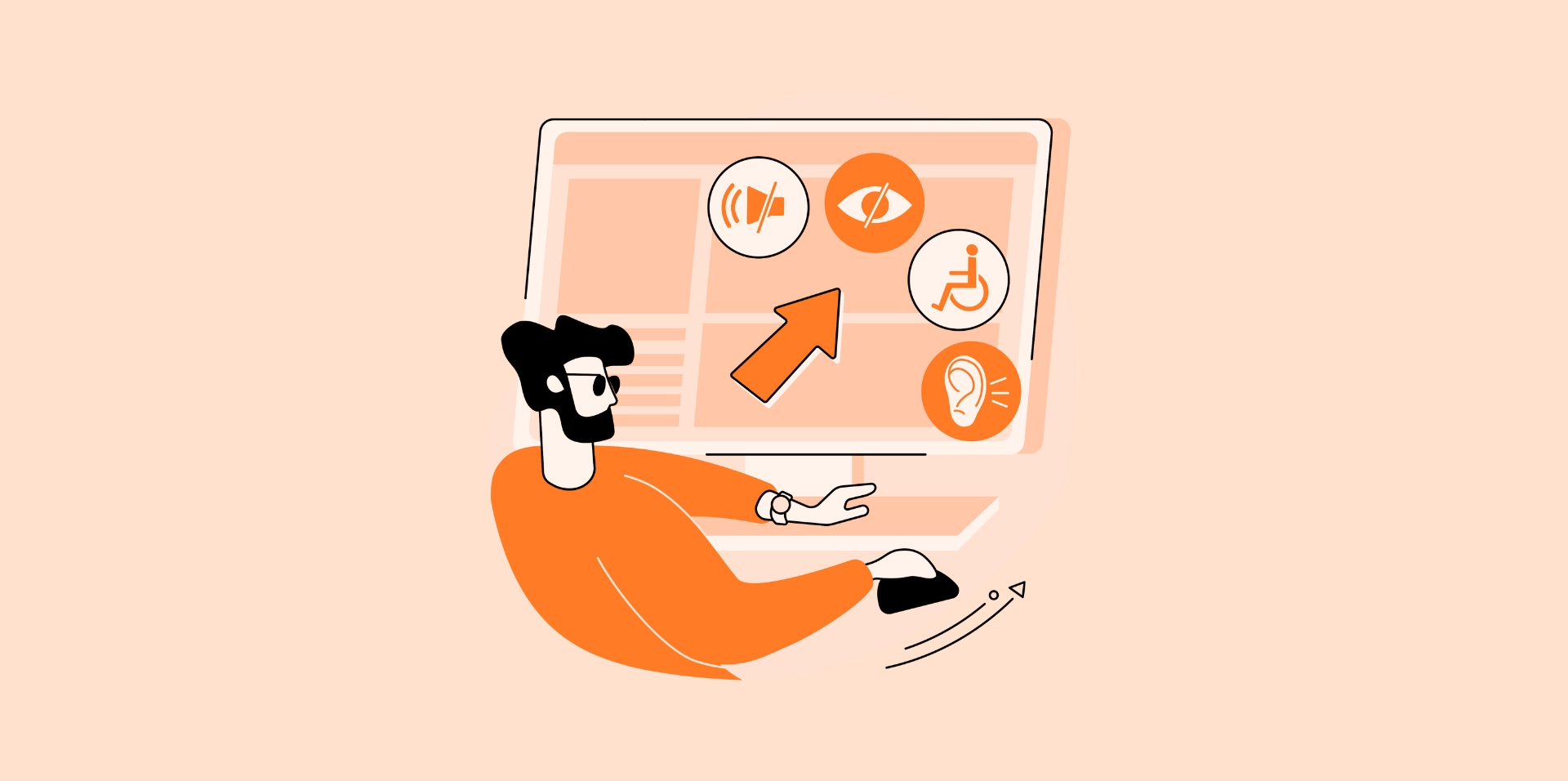Ensuring your website is accessible to all users, including those with disabilities, is best practice and also a legal necessity. An accessible website broadens your reach and enhances user engagement, reflecting positively on your brand’s commitment to inclusion. In this guide, we explore some of the top web accessibility tips that every website should implement, focusing on design adjustments, SEO considerations and ways to improve the website experience for everyone.
If you need an accessible website built for your company or an existing site requiring accessibility improvements, don’t hesitate to contact us to discuss your requirements. We offer a free initial consultation and would love to hear about your project and talk through how our experienced development team can help.
What is web accessibility?
Web accessibility refers to designing websites and digital content that people of all abilities and disabilities can access, navigate, and use. The goal is to create an inclusive digital space that accommodates everyone, regardless of auditory, cognitive, neurological, physical, speech, or visual impairments.
To achieve web accessibility, web developers and designers must follow the Web Content Accessibility Guidelines (WCAG), which set the standard for accessible web design. These guidelines are divided into three levels of accessibility (A, AA, and AAA) and cover a range of elements, including text, images, sounds, code, and the overall layout of digital content.
Web accessibility tips
1. Use semantic HTML
Semantic HTML is essential for web accessibility as it provides meaningful structure to web documents, making it easier for assistive technologies to interpret and interact with content. Semantic elements like <header>, <footer>, <article>, and <section> clearly define the parts of a web page, which helps screen readers and other tools to present information accurately. It will also improve SEO, as search engines will better understand the content and structure of your website.
2. Ensure text contrast
Ensuring sufficient text contrast on each web page is essential for readability, particularly for users with visual impairments like colour blindness or low vision. The text must stand out against the background, with recommended contrast ratios of at least 4.5:1 for standard text and 3:1 for large text, according to the Web Content Accessibility Guidelines (WCAG). Tools like colour contrast analysers can help verify that your website and online content meet these standards.
3. Provide text alternatives (alt text)
Text alternatives, or alt text, for all images on your website, is a fundamental aspect of digital accessibility. Providing this descriptive text helps visually impaired users access an image’s content and context through screen readers. With this in mind, the alt text should concisely explain each image’s purpose and what it shows.
Alt text also serves as a backup when images fail to load, and it benefits SEO by helping search engines index images more effectively.
4. Enable keyboard navigation
Enabling keyboard navigation is essential for making your website accessible to users who cannot use a mouse, including those with physical disabilities or visual impairments. This includes ensuring that all interactive elements, such as links, buttons, and form controls, are reachable and usable with keyboard shortcuts alone. It’s also important to maintain a logical tab order and to provide visible focus indicators, such as outlines around focused elements, to help users track their navigation through the site.

5. Ensure link accessibility
To enhance link accessibility, use descriptive anchor text that clearly explains the link’s destination, avoiding vague phrases like “click here.” Ensure links are visually distinct from regular text through colour contrast and underlining, and make them keyboard-navigable with clear focus indicators. This approach helps users with assistive technologies and improves overall navigability.
6. Use ARIA landmarks
Using ARIA (Accessible Rich Internet Applications) landmarks helps define regions of the page, enhancing navigability. Landmarks enable screen readers and other tools to quickly understand page structure and jump to specific content, such as navigation, main content, or contact information. Implement ARIA landmarks by adding roles like banner, navigation, main, complementary, and content info to your HTML containers.
7. Use clear language and headings
Straightforward website content is essential for web accessibility, enabling all users, including those with cognitive impairments, to understand and interact effectively. Using plain language to minimise jargon and complex vocabulary helps avoid confusion, and structuring content with logical headings helps users navigate and comprehend material quickly.
8. Create accessible forms
To improve form accessibility, ensure every input field is accompanied by clear, descriptive labels. These labels should be programmatically linked to their respective form controls, enabling screen readers to effectively communicate the field’s purpose to users.
You should also provide straightforward instructions and error messages to help users complete the form and implement real-time validation to proactively notify users of errors. This will enhance accessibility and minimise frustration and confusion before submission.
9. Perform regular audits
Performing regular accessibility audits helps maintain an inclusive website by identifying and resolving accessibility barriers that might prevent users with disabilities from fully interacting with it. To ensure a comprehensive review of your site’s accessibility, use automated tools and manual testing, and consider outsourcing an audit to an experienced digital agency.
Build an accessible website with britweb
Whether you’re looking to build a new website or modify an existing one, britweb can help you every step of the way. We provide comprehensive accessibility audits, accessible designs and content, and ongoing support to ensure your site follows web accessibility standards.
Don’t miss out on the opportunity to improve your website’s reach and reputation. Call 01403 261491, and we’ll be happy to help.
